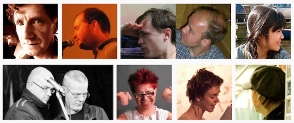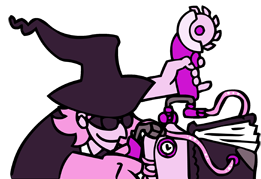
New Scottish Poets
by Sandra Alland (editor); Jim Ferguson, Colin Herd, Marvo Men, Lila Matsumoto, Shellsuit Massacre, Alison Smith, Nuala Watt.
Jacket2
reviewed by Harry Giles
Difference in voice, and voices of difference, in Scottish poetry
The New Scottish Poets anthology is a small selection of diverse voices, finding a particular Scottish poetry in marginal positions of form and identity. Spanning British Sign Language performance poetry, found-poetry-techno, sound poetry scores, and more traditional stanza forms, the selection is striking in the plurality achieved over only seven poets.
Alland has chosen to select a series of voices-from-outside: queer, disabled, immigrant
In the introduction, Alland writes that “Scotland is finally coming into itself again” as the country moves towards its referendum on independence, and sees this selection as articulating something about a “new excitement in Scottish writing” as a result. Scotland is now 14 years on from the Act that established the new Scottish Parliament, and approaching the second ballot on full indepence in 40 years – but this time with a Nationalist government and its own elected body. If all this means that Scotland has a renewed national confidence, as Alland asserts, it's easy to imagine renewed confidence in national culture.
As it happens, 2012 was designated by the Scottish Government as the Year of Creative Scotland, a celebration of the arts and the “creative industries”. What's significant about Alland's positioning, however, is that it runs counter to a government-mandated cultural agenda – not just in its composition, but even in the introduction, which cynically disparages as forced the cultural activity in 2009's “Homecoming Scotland” programme. What is explored in this collection, then, is neither a collection of uncomplicatedly Scottish poems nor an articulation of a hegemonic Scottish identity. Rather, that “new excitement” is played out across a consistently surprising sequence of poets, each finding new ways to explore marginal identities and the literary body.
The collection begins with one of the most clearly Scottish of the texts, an extract from Jim Ferguson's Ms. Mati becomes a mother. The eponymous Mati is a complex and ribald figure, responding to the opening semi-ironic pontification on the idea that “Drought is the opposite of freedom” with “so fuckin what”. The narrator and the narrated here are negotiating the clashes between intellectual dread and a shamanic quasi-pagan Scottishness: Mati “cures morning sickness / with herbal remedies” but also “sits out by the canal [...] reading Dostoyevsky”. Mati both “thinks / she's some kind of shaman / mother-earth-fuck-good-witch” and is “awright but / cool and tough but / just like a woman”. These clashes are aligned with those between the male narrator and the narrated female. The territory is negotiated by broken lines and sharp rhythms, coarse and direct word-choice reaching towards something metaphysical. Mati talks Scots, and is talked about in Scots, but her name is anything but archetypically Scottish, and her femininity bound up in the narrator's masculine viewpoint.
Colin Herd's masculinity is something other altogether. There is no shamanic female Mati in his poems – they are rooted in queer conversations and anxious longings. They employ introverted rambling nonetheless rooted in bodily experience and observation: “our / trousers would be the jewellery / weighing heavy on our fists”. The poet here seems trapped in his own mind and his own poetics, pining for the experience of another body or another existence, trying to write his way towards that existence without any firm sense of how he might get there:
i'm panging horrendously, coveting that floaty, amorphous, polygamous / creative life [...] but through that, well, I don't really / know how it works
These lines consistently push at the boundaries of their form: sentences tail off and dovetail into new thoughts, an anxiety is never completed but subsumed by the next. Marvo Men, in contrast, eviscerate the stanza entirely. Their poetry comprises live vocal improvisation and shattered, minimal scores for performance. On the page, a fistful of words and letters are split and stretched over few sparse lines; in the audio performance, guttural, pained vocalisations heave in overwhelming waves of sound. In both forms there is real terror.
The potential paradox in both the score and the performed poem is that of expressing the inexpressible -- of finding a way, in this case, to communicate a kind of destructive, overwhelming horror. Marvo Men achieve this by reaching beyond language, beyond linguistic communication. Their score features no complete words and few complete letters, destroying and de-storying the poem and its form; in their performance, similarly, there is no sound that fully resembles a word, and whenever a word seems to be emerging it veers off into new noise. Their poetry both communicates something cannot be spoken about in words and freely explores what that something results in: a liminal world of non-linguistic vocal expression.
There is horror too in Lila Matsumoto's three short poems – explicitly so in It's here, in which an unnamed, undescribed monster (“something small / and terrible is assuming a form”) approaches portentously across the page. As you might expect, in these poems monsters are things which come in the darkness: the thing's hands have “obscured the gloaming light”, and the next poem, Yard, neatly captures the experience of the same gloaming making a landscape “bruise black” as its objects “harden / into nightshape”.
Against this darkness, language itself takes a light-like role. In The Day, “Words come back” and “wherever there is light, people are growing their meanings”. Light and language are as wedded here as darkness and silence – cf. that carefully undescribed monster – and so for all that the poems chart dread, writing them appears to be the required antidote. By the end, the monster is only “Something which had been approaching.”
Shellsuit Massacre face up to their monsters with crunching techno and short, spat Scots lines. The first half of Gangs is a dour litany that mixes literary, historical and local gangs with more hegemonic forces: “niddrie terror / fix it crew / the red hand gang / nhs lothian”. In this poem, the FBI are seen as no better than hoodies, and gangsters are indistinguishable from the Catholic Church. The list is unpacked by a fractured description of urban unrest, juxtaposing bourgeois fear and working class anger underneath watchful CCTV cameras, with:
anti youth on the boundary of parkland barbered lawns the street light edge police exclusion zone a trio of fearsome dogs
The same antipathy to authority, or equation of authority with gang violence, is found in get on the increase, where “police / and cctv cameras / help crime” and “monsters” are found right next to the “everyman”.
After all this horror and violence, Alison Smith's tender Fingers is a mercy. It exists simultaneously as performance, video, text and audio – though the editor's exhortation is to see the silent performance as the ur-poem, because Smith's poetry is conceived and performed in British Sign Language. The video of the BSL performance is a striking and sincere account of seduction, with the paired actions – “i fear, you don't / i look, you smile / you kiss, i melt” – complemented by the alternating jerks and glides of sharp and smooth BSL movements. Against this video, the printed text, though carefully translated, cannot help but be reductive, parsing only a few layers of meaning. Smith's poetics is necessarily non-verbal, but as both physical and linguistic, existing as both language and movement, it renders a sensual text strikingly physical.
Just as Smith finds vibrant forms in the rejection of poetry's verbal component, Nuala Watt's poetics of disability are potent and startling. In A Cognition Test; The Woman in Blue Draws a House, the drawing “can't just be a house. / It must be a trick question. / Can it fly?”, while in The Eye Chart, each line decreases in font-size until
I've bypassed every symbol I can name and stumble at my vision's borders where letters are as illegible as stars
This seemingly empowered response is contrasted to a meeting with an ophthalmologist in Eye Test, “whose job it is to clarify my dark / and gauge the exact colour of my blindness”. The desired exactitude here is far less thrilling than Watt's own conception of her eyes, which she wants to believe “can hold a solar system, catch all lights, / deliver to the doctor alphabets”.
Alland has made it easy here for us to extract themes – written language's dual role as clarifier and obfuscator, which in Matsumoto's poetry brings light to dark places but in Smith's poetry can actively hinder full appreciation, which is resisted in different ways by Marvo Men's vocalisms and Herd's stream of consciousness. What is notable here is that the full richness of such themes would be wholly impossible to capture in a print anthology: the excitement of New Scottish Poets is in the multiple media explored as much as in the strength of the poetry.
Interesting too is the distinction between Alland's choice of New Scottish Poets and, for example, the Scottish Poetry Library's annual Best Scottish Poems, or Salt's new Best British Poetry series. While the best-ofs' editors are required to survey the national landscape and make a subjective selection of preferred texts, Alland is able to actively resist being representative (she admits the selection is “by no means representative of all of Scotland”, absenting Gaelic and including only anglicised urban Scots) in order to articulate something definite and striking.
Alland has chosen to select a series of voices-from-outside: queer, disabled, immigrant, and so on. When asked how Scottish their poetry was, her poets “pretty much shrugged”, but Alland sees “the new excitement in Scottish writing” being exactly in this outsider's view, in a mix of “home-grown and migrant poets” which allows for “flourishing hybrid forms”. Like Alland, and like many of these poets, I too am “from here and not from here” (I grew up in Orkney, but to English parents, and so will always be an incomer to my own home), and so I too am thrilled to encounter a problematic and plural Scottish poetics. Alland and I are both partial in this way – inasmuch as we feel we belong to Scotland, we have to claim a Scottish identity that embraces plurality and the margins. Her introduction seems to imply that this becomes more possible as Scotland “comes into its own” – with its own Parliament, no longer partly identifying as occupied territory, there is less political need for or force behind a hegemonic Scottishness. As we confront the possibility of independence, and as our nationalism continues to assert itself, we are likely to find out just how true that rings.
To that end, howeveer, it's also worth noting,that in Scottish literature there has long been an aspect of this idea. It is striking how often the old Caledonian Antisyzygy – the concept coined by G. Gregory Smith in 1919 to describe the streak of doubleness in our canon, taught to every Scottish school pupil at Standard Grade – rears its two-faced head in this anthology. Ferguson's shaman/Scot, Shellsuit Massacre's monster/everyman, and even the wave/particle-like dual forms of Smith's and Marvo Men's poetry, just to cite the most obvious examples. The tension between indigenes and incomers, between inside and outside, is another such doubleness, as in many colonised countries. Perhaps an outsider poetics has thus always been an essential part of Scottish poetry. It is there in the Gaelic absent from this selection (and from either volume of Best British Poetry), or in, to pick famous examples, Mackay Brown's catholic sensibility in protestant islands, Hogg's mocked “Ettrick shepherd” abroad in Edinburgh, and every page of the pseudonymous Hugh MacDiarmid. If so, then in a time of resurgent Scottish identity, Alland's New Scottish Poets is a timely reminder of our queerness and our plurality.









